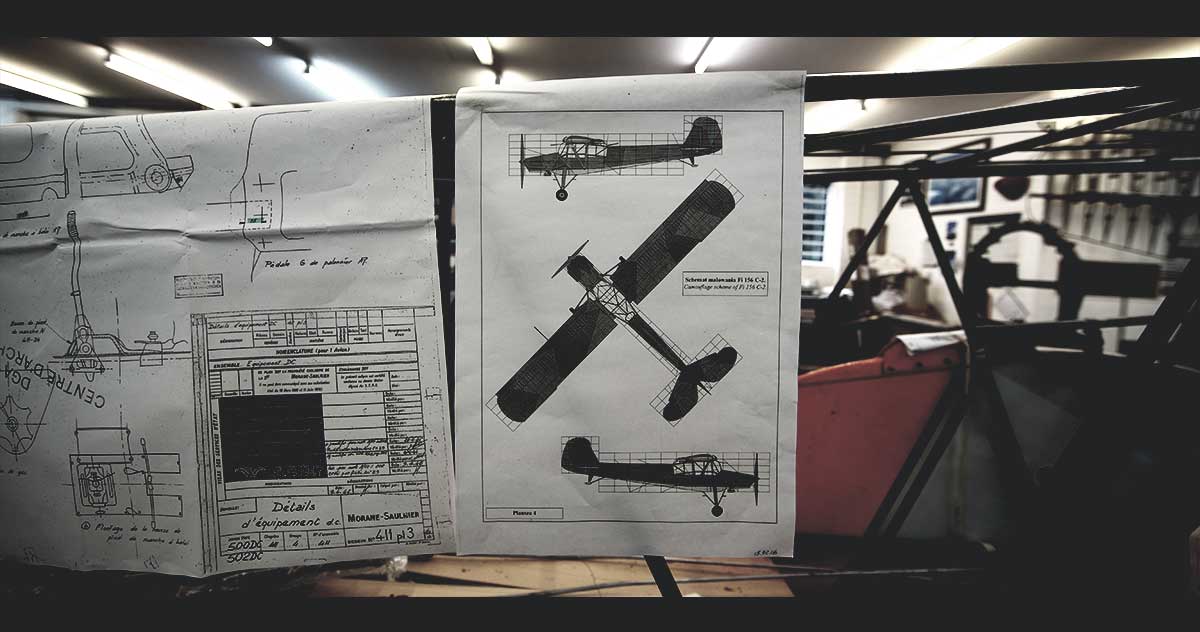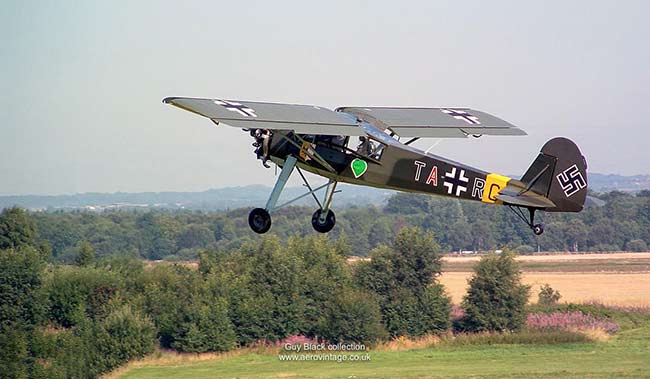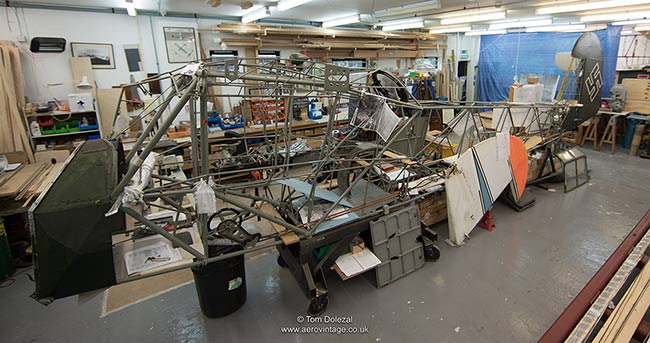Cookies
We use cookies to ensure that we give you get the best experience on our website.
Using this website means you're ok with this.
OK
Fieseler Storch, W.Nr.1827, (G-BPHZ)

Fieseler Storch, W.Nr.1827, (G-BPHZ)
Incredible looking with its long spindly undercarriage and high aspect ratio wings, the Fieseler Storch was one of the most unusual aircraft of World War II. The Storch has an amazing low speed capability and served as reconnaissance, liaison and ambulance aircraft. Given favourable weather it can almost hover stationary, an extraordinary feat for any aeroplane. It's most famous uses were as a personal transport for Field Marshall Rommel and for the mountain rescue of the Italian dictator Mussolini.
This particular example W.Nr.1827, registered G-BPHZ constructed in France in 1942 was originally fitted with an Argus inverted V8 engine. Post war it was used by the French Armée de L'Air, designated an MS 500 Criquet. After its military service it was re-engined with a Jacobs radial becoming a MS 505 Criquet and used for glider towing before being brought to the UK in 1988. It joined the Historic Aircraft Collection in 2002. The true earlier identity was found after the French data plate was removed, the German plate being located underneath it. In addition, most of its equipment and parts were found to be German made.
An original Argus V8 engine has been acquired, together with its propeller and some of its accessories and it is being converted to its original MS 500 specification, but with all German equipment and instruments fitted.
(but see main panel).

